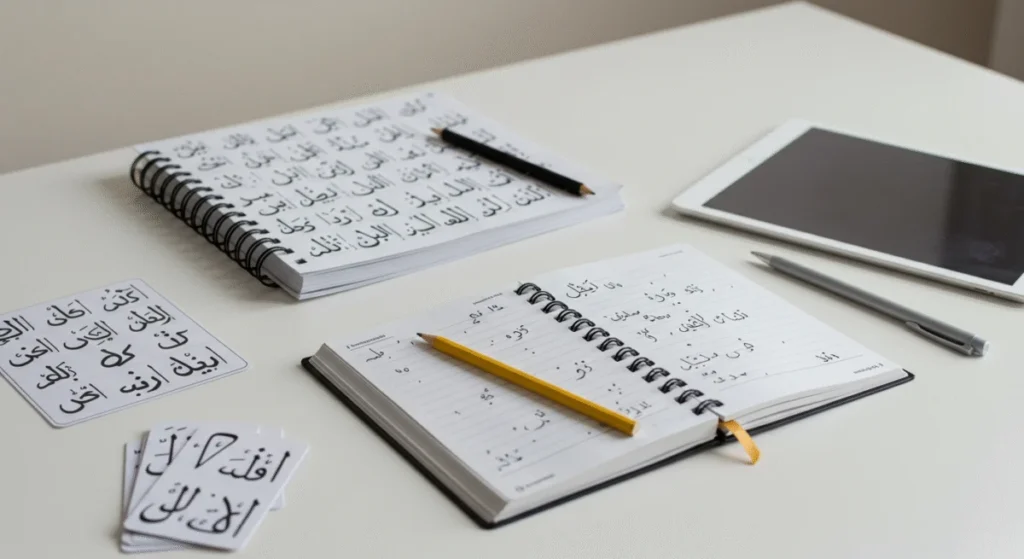
At first glance, the Arabic alphabet can seem mysterious — full of dots, curves, and unfamiliar shapes. But here’s the truth: with the right approach, learning the Arabic script becomes both enjoyable and deeply rewarding.
Whether your goal is to read the Quran, perform salah with understanding, or simply explore a beautiful language, this guide will help you take your first confident steps into Arabic reading and writing.
🔠 1. Arabic: A Beautiful and Logical Script
Arabic is written from right to left and has 28 letters, most of which change shape depending on their position in a word. Unlike English, there are no capital or lowercase letters — just flexible forms.
🧩 Fun Fact: Arabic letters are connected like a puzzle, making words flow like art across the page.
Once you recognize the patterns, it becomes much easier to read and write.
🧱 2. Start With the Basics: Letters and Sounds
The best place to begin is with the individual letters and their sounds.
- Learn 4–5 letters per day
- Focus on pronunciation and writing
- Use visual flashcards, tracing sheets, and audio support
Recommended tools:
- Alif Baa Taa books
- Madina Arabic Reader (Book 1)
- Apps like “Learn Arabic Alphabet” or “Qamar”
🎧 3. Listening Is Essential
Arabic has unique sounds like ‘Ayn (ع) and Qaf (ق) that don’t exist in many other languages. Listening helps your ears train for proper pronunciation.
Try:
- Listening to slow Quran recitation
- YouTube videos teaching letter sounds
- Arabic alphabet songs (yes, even adults can use them!)
The more you hear, the faster you’ll absorb the rhythm of the language.
✍️ 4. Practice Writing Daily
Writing by hand helps you remember the shape, flow, and connections between letters. Set aside 10–15 minutes a day to:
- Trace letters using workbooks or PDFs
- Write short words like “باب” (door) or “نور” (light)
- Copy verses from the Quran (even if you don’t understand them yet)
📒 Tip: Keep a personal Arabic notebook for tracking progress.
🔄 5. Connect Letters and Recognize Patterns
Unlike English, Arabic letters change form depending on whether they’re at the beginning, middle, or end of a word.
For example:
- ب (ba) becomes: بـ (start), ـبـ (middle), ـب (end)
Practice reading connected letters slowly and use color-coded charts or apps with animations.
🎯 6. Don’t Rush — Repetition Builds Confidence
It’s okay if it takes time. Arabic is unlike most languages — and your brain is building new connections. The key is consistency.
Celebrate the small wins:
- Recognizing your first word
- Reading a verse from the Quran
- Writing your name in Arabic
Every step is a milestone.
🌟 Conclusion
Learning the Arabic alphabet is more than memorizing letters — it’s the start of your relationship with a sacred and poetic language. Whether for religious understanding, cultural appreciation, or personal growth, this step lays the foundation for everything that follows.
The journey of a thousand verses begins with just one letter — start with Alif.